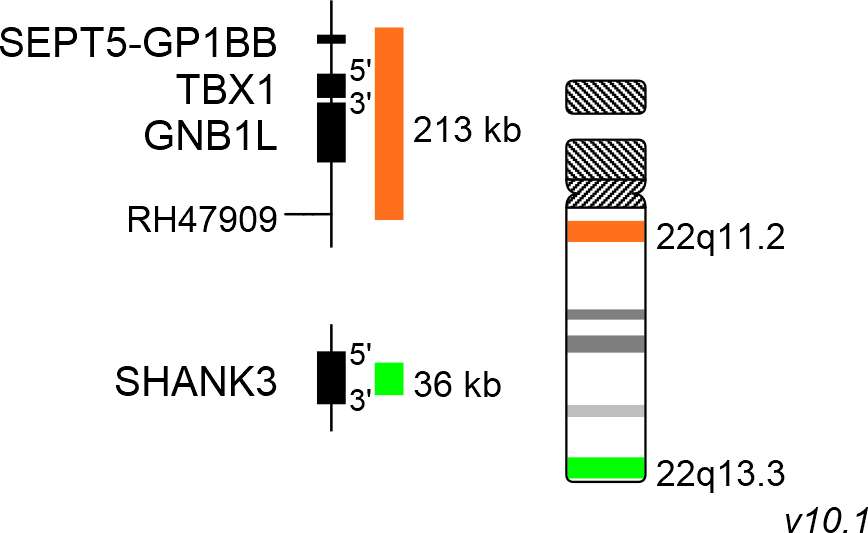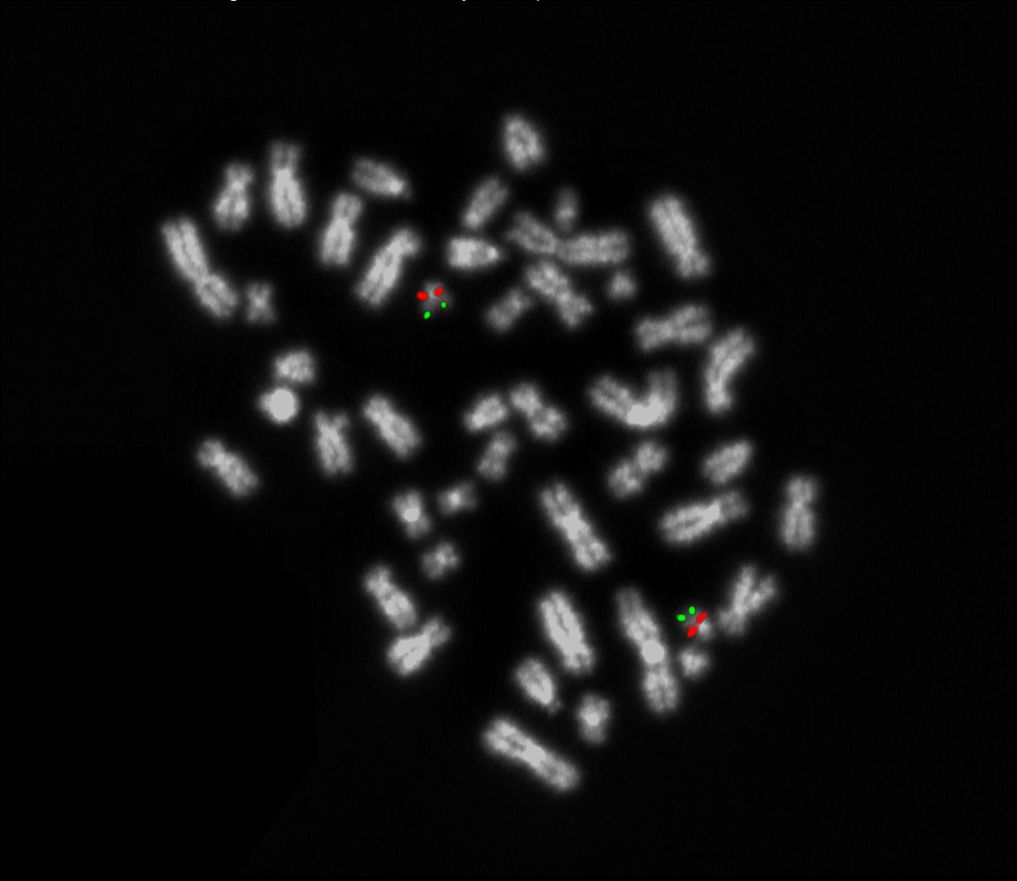
XL DiGeorge TBX1
Deletion Probe
- Order Number
- D-5415-050-OG
- Package Size
- 50 µl (5 Tests)
- Chromosome
- 2222
- Regulatory Status
- IVDD
IVDR Certification
MetaSystems Probes has already certified a wide range of FISH probes, according to IVDR.
This product remains IVDD-certified until further notice.
Discover all IVDR-certified products
XL DiGeorge TBX1 consists of an orange-labeled probe hybridizing to the TBX1 gene region at 22q11.2 and a green-labeled probe hybridizing to the SHANK3 gene region at 22q13.3.
Probe maps for selected products have been updated. These updates ensure a consistent presentation of all gaps larger than 10 kb including adjustments to markers, genes, and related elements. This update does not affect the device characteristics or product composition. Please refer to the list to find out which products now include updated probe maps.
Probe map details are based on UCSC Genome Browser GRCh37/hg19, with map components not to scale.
22q11.2 deletion syndrome (22q11.2DS) includes the DiGeorge- and Velo-cardio-facial syndrome and is the most common microdeletion syndrome. Up to 95% of the deletions identified occur de novo and are not inherited. 22q11.2DS related de novo deletions are mediated by non-allelic inter- and intrachromosomal homologous recombination between low copy number repeats on chromosome 22. A deletion of 3 Mb overlapping about 90 genes, is detected in the vast majority of 22q11.2DS cases whereas a smaller fraction is identified with a nested deletion of about 1.5Mb overlapping with about 55 genes. One of the most thoroughly investigated genes in this region is the T-box transcription factor 1 (Tbx1). Tbx1 is phylogenetically conserved and has manifold functions during embryonic development. Studies using mouse as a model organism have shown that Tbx1 is a key determinant in 22q11.2DS.
Clinical Applications
- Microdeletion Syndrome (MicroDel)

Normal Signal Pattern:
Two green (2G) and two orange (2O) signals.

Aberrant Signal Pattern:
Two green (2G) and one orange (1O) signal resulting from loss of one orange signal.

Aberrant Signal Pattern:
One green (1G) and two orange (2O) signal resulting from loss of one green signal.
- Edelmann et al (1999) Am J Hum Genet 64:1076-1086
- Jerome and Papaioannou (2001) Nature Genet 27:286-291
- McDonald-McGinn et al (2015) Nat Rev Dis Primers 1:1-19
Certificate of Analysis (CoA)
or go to CoA Database




